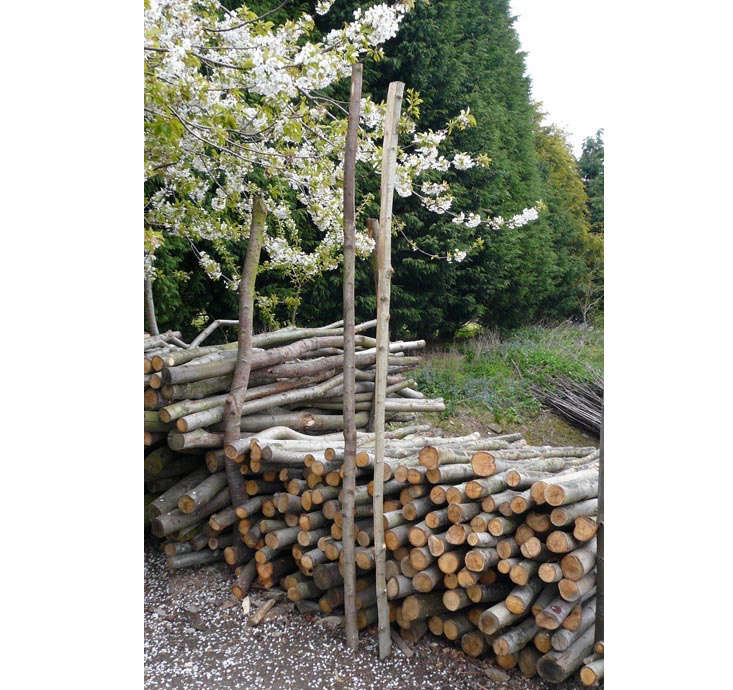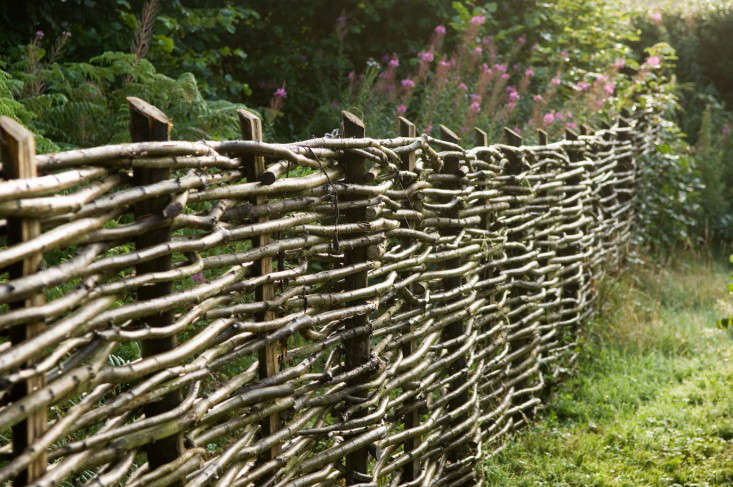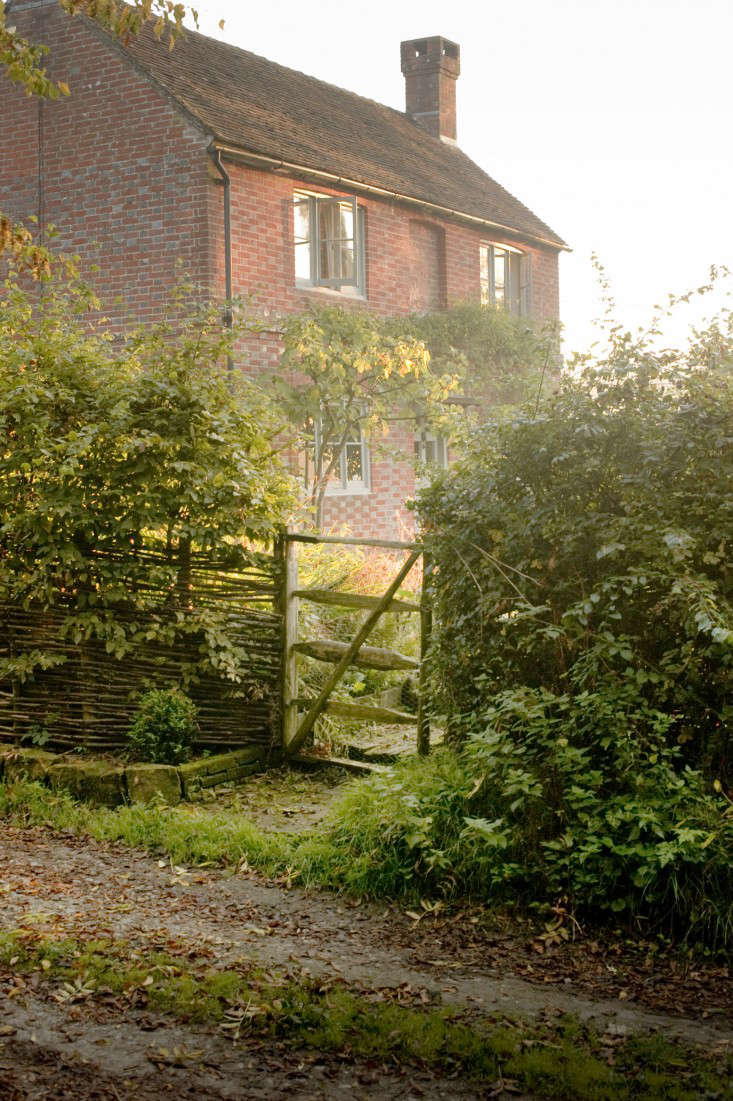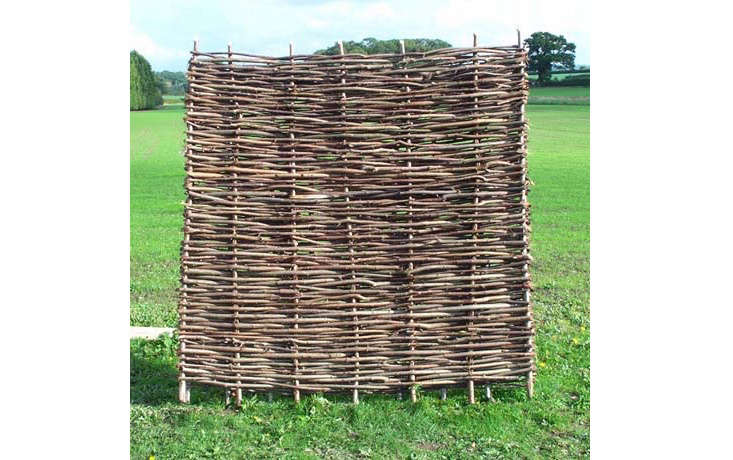Woven fences have been constructed for thousands of years, from the Neolithic age, as a way to mark out land and enclose crops and livestock, but recently this extremely versatile, naturalistic form of fencing has been particularly popular with gardens designers too, thanks to its low-impact aesthetic and ability to fit into almost any space. Woven fencing can largely be divided into two types—hurdles which are moveable panels that can be slotted into the ground and then bound to other hurdles with posts, or continuous woven fencing, which, as the name suggests, is installed onsite to any dimensions. Read on for the nuts and bolts of this brilliantly useful fencing.
What are woven fences?

A woven fence made either of panels or as a continuous weave consists of upright poles which are sunk deep into the ground and horizontal strips which are then woven across the uprights. The finished look largely depends on the materials in your fence.
What materials are best for woven fences?
Willow or reeds: These are fine and may be densely packed together for a less airy look and a slightly warmer, richer color.

Hazel: Hazel woven fencing has horizontals made from split rods, giving a more stick-like look and a slightly cooler tone. Each will age with time and weathering. The color of materials can also vary in different areas.
Bamboo: Bamboo can also be used for woven fencing panels. Bamboo canes are sturdy and a long-lasting option.

For Butter Wakefield, who recently used woven hazel hurdles for a project in Notting Hill, the materials added a whimsical feel that couldn’t be achieved with more conventional fencing— it was also more economical than hardwood trellis. “I like adding unexpected elements to designs. The hazel feels organic and hand-crafted,” says Wakefield who commissioned landscaper Michael Darvill of Landcrafted. “We used it as a boundary on a front garden and planted yew columns in front with quite loose romantic planting between. It surpassed everybody’s expectations.”
How do you install woven fencing?
Anyone can install hurdles, which come in different sizes from mini hurdles for edging borders or raised beds to panels that measure 6 by 6 feet. Just like regular fencing panels, they are secured in place by intermittent posts which are usually in the same material but can also be in chestnut or metal.

Continuous woven fencing is installed by a specialist and this is where the real beauty of this craft lies; a hurdle maker can create a continuous fence at any height and to almost any shape. It can curve and undulate, making it very versatile in a garden where there could be immovable features. The height of the fence can also go up and down, creating beautiful dynamic shapes that wouldn’t be achievable with any regular fence.

The weave can also be used to create interesting patterns such as herringbone. Woven fencing can be used to edge beds in kitchen gardens, it can provide an enclosure on a terrace or be used to create many other garden structures.
To finish the fence neatly, the ends and the top ridge are tied in neatly once the fence is completed. Once installed a continuous woven fence is an incredibly sturdy structure, that will survive the strongest storms.
If you are competent (and blessed with biceps) you could even create your own hurdles; hazel poles and rods are readily available from woodland suppliers.

Does my garden need a woven fence?
A continuous woven fence is a great way to screen off unsightly features or areas from view; bins, utility areas, oil and gas tanks can also be elegantly concealed. Hurdle sections can also be used as temporary screening as they are easily lifted and moved. The English gardener and broadcaster Monty Don used hurdles that he built himself to make out his garden rooms while he was waiting for the hedges to grow at his gardens at Longmeadow. Hurdles can also be used as an effective wind barrier for exposed sites.

Why are woven fences more ecologically sound?
If you are using a local craftsperson to make your fence then they will either grow materials themselves or coppice during the winter months, so materials are much more sustainable (hazel can be coppiced every seven years) and usually materials do not have to travel far to the site. By commissioning a woven fence you are also helping to support a traditional craft.

How durable is a woven fence?
How long your fence lasts will depend on the situation. A fence in a very exposed or wet site might not last as long as one in a drier climate but you can expect a woven fence to last from 10 to 15 years. You can also prolong its lifespan. Butter Wakefield added chestnut capping rails to her Notting Hill project and treated the hurdles with a preserving oil to help the fence last as long as possible.

Can I plant near or over a woven fence?
Woven fences look beautiful as they are but they also provide a good-looking backdrop to plants and shrubs too. They also provide a perfect framework for climbers and vines, overtime becoming the skeleton beneath established plants.
How much does a woven fence cost?
Prices vary widely but you can expect to pay anything from £4 to £14 per square foot (about $5 to $18 US) for a continuous woven fence in willow or hazel. Basic fences are at the lower end of the scale while intricate herringbone designs are at the top end.

Who to call:
- Hurdlemaker: Fence design David Downie of Stowmarket, Suffolk makes traditional woven hazel fencing and sells hazel wattle hurdles.
- Brampton Willows: A family business in the east of England, Brampton Willows specializes in natural woven willow fencing and garden products.
N.B.: This post is an update; it was first published on January 2017.
For more on fences and gates, see Fence Hurdles and Gates from Green Man Wood Crafts and Hardscaping 101: Design Guide for Fences.
Finally, learn how to successfully design a fence for any landscape or garden project with our Hardscaping 101: Fences & Gates guide.











Have a Question or Comment About This Post?
Join the conversation